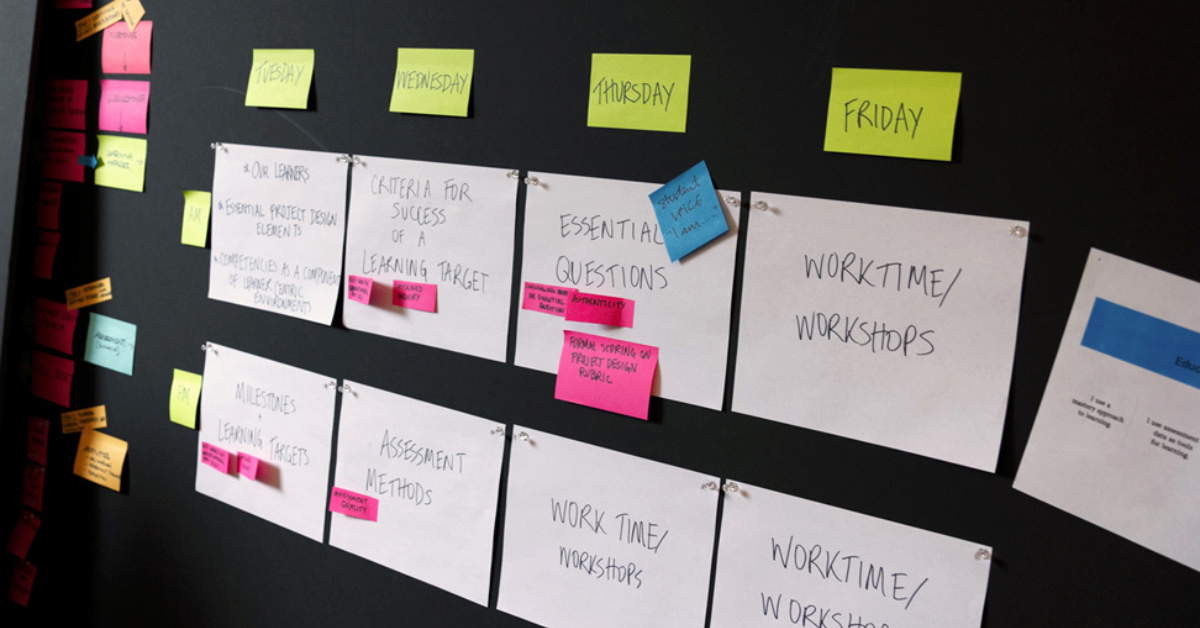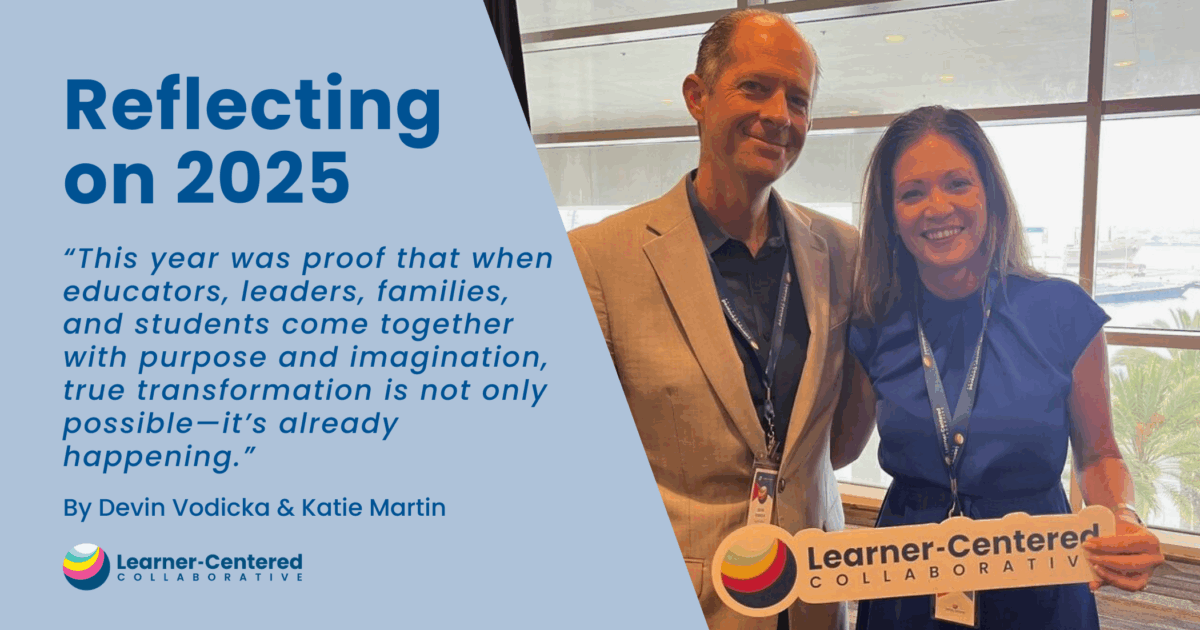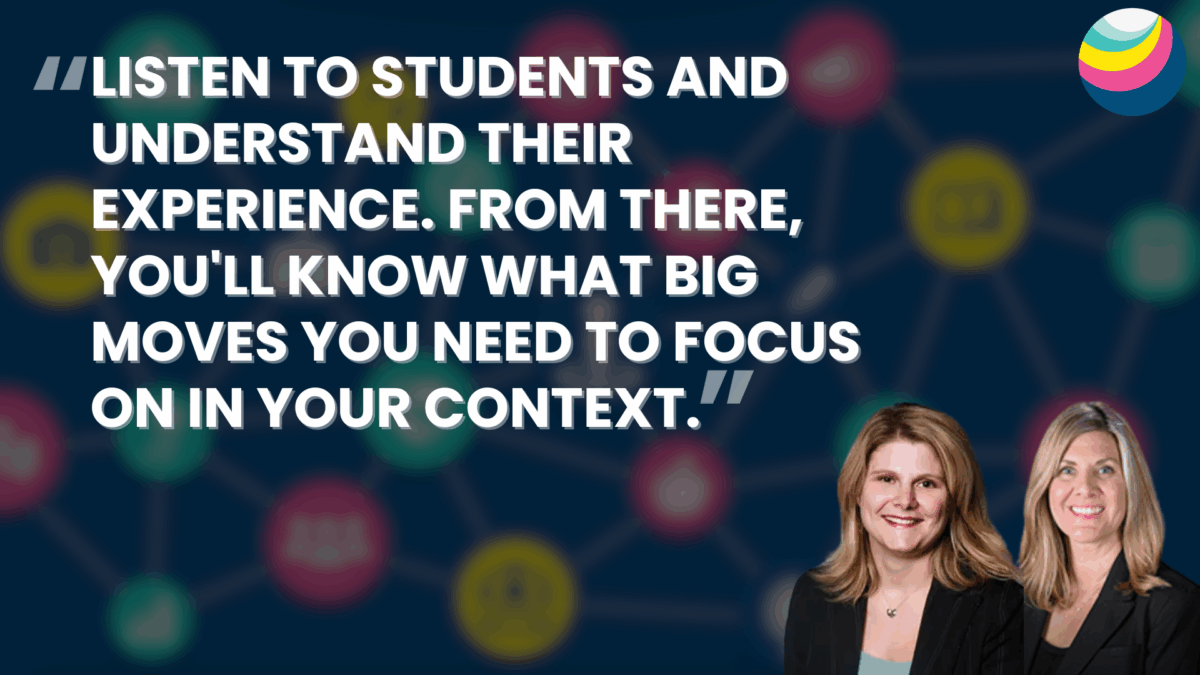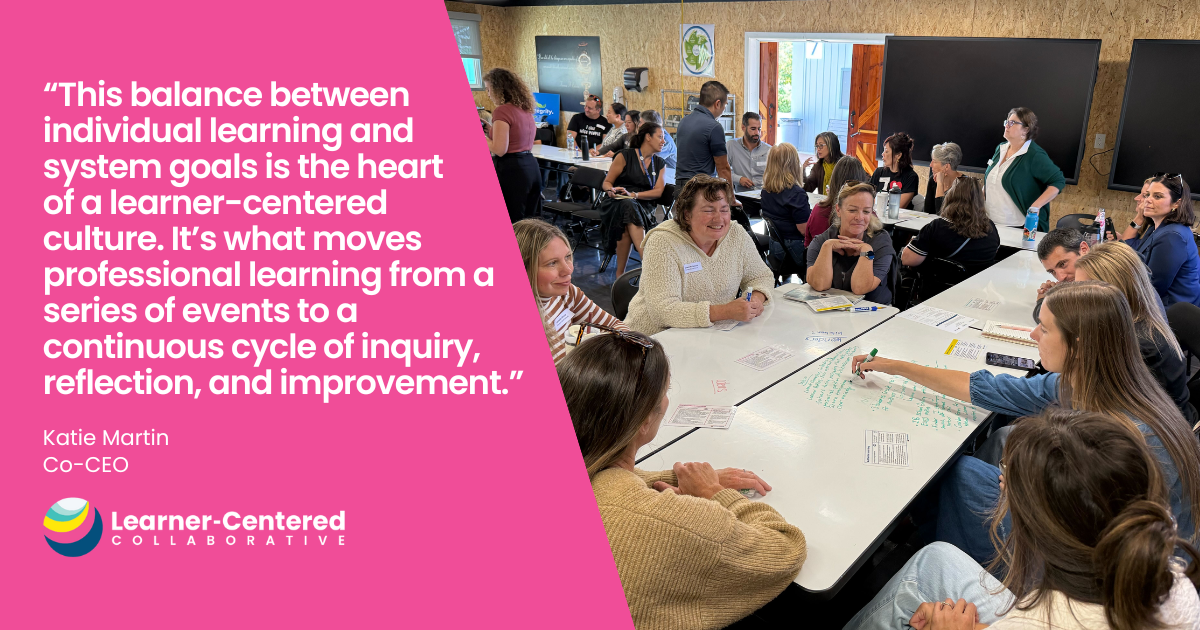How might we create learner-centered teacher credentials?

Teachers and aspiring teachers, in no uncertain terms, are telling us we need to reimagine how they are being prepared and supported to do their jobs well. A recent report by the American Association of Colleges for Teacher Education delivers a concerning message: “Between 2008 and 2019, the number of students completing traditional teacher education programs in the U.S. dropped by more than a third.” It’s important to emphasize, this is a pre-pandemic data set.
In our post-pandemic world, the situation is compounded by the fact that existing teachers are considering early exits from the profession. In a 2022 survey conducted by the NEA, a staggering 55% of respondents expressed their intention to leave the education profession earlier than planned.
If we have 33% less students completing teacher education programs and 55% of existing teachers intending to leave the profession early, are we willing to take immediate and meaningful action? In an industry where our teachers are the cornerstone of the invaluable services we provide young learners and our communities, are we going to help them thrive?
These distressing trends should serve as a wake-up call to policymakers, school administrators, and teacher preparation programs nationwide. We must consider the important role of teacher preparation programs and credentialing systems if we want to attract and retain dedicated and capable educators.
Current Context and Challenges
Traditional teacher credentialing programs have long been the foundation of preparing educators for the classroom. However, the existing system is not without its limitations and challenges.
The decentralized nature of teacher credentialing, with each state having different requirements, creates fragmentation and inconsistency across the country. This lack of coherence poses barriers for educators seeking geographic mobility and hampers the sharing of best practices.
The traditional teacher credentialing model has also faced scrutiny for its rigid approach, often disconnected from the diverse needs and contexts of learners. Critics argue that it focuses heavily on content knowledge and pedagogical techniques, overlooking essential skills such as adaptability, cultural responsiveness, and relationship-building. Moreover, the traditional model can be time-consuming and costly, posing barriers for aspiring teachers, particularly those from underrepresented backgrounds.
Something has to give. Right now, it’s teachers leaving or not entering the profession in the first place. One important shift is how preparation programs are designed to connect theory and practice.
What’s Possible: A Learner-Centered Approach
The challenges above are far from exhaustive but serve us well in understanding where we need to start this conversation—at the very foundation of what it means to be a prepared professional in today’s educational settings.
When exploring this topic, we encourage taking a page from Buffy Cushman-Patz and the educators at SEEQS, a public charter middle school in Hawai’i: “if it’s good for young people, it’s good for adults.” This is one of the clearest ways to express what sits at the heart of learner-centered education philosophy and practice. And, it is exactly what is needed in today’s teacher preparation and credentialing programs.
The need to adopt a learner-centered approach that better prepares teachers to meet the ever-changing needs of students has become increasingly evident. By addressing the shortcomings of the existing system, we can create a new paradigm of teacher credentialing that prioritizes flexibility, relevance, and the holistic development of educators.
The Benefits of Aligning Teacher Credentialing with Learner-Centered Practices
Learner-Centered Collaborative has created a learner-centered framework that begins with whole-learner outcomes that are achieved through authentic learning, competency-based assessment, personalization, and inclusive and equitable communities.
This learner-centered approach should encompass the professional growth and development of educators themselves. Aligning teacher credentialing with learner-centered practices offers numerous benefits for both teachers and students.
- Enhanced Pedagogical Effectiveness: Learner-centered practices focus on tailoring instruction to meet individual student needs, fostering deeper engagement and understanding.
- Increased Teacher Agency and Satisfaction: Teacher credentialing that incorporates learner-centered practices empowers educators to have greater agency and autonomy in their instructional decisions. It encourages them to tap into their expertise, creativity, and innovation, allowing for a more fulfilling and satisfying teaching experience.
- Improved Relationships: Learner-centered practices emphasize the importance of building positive and supportive relationships. Aligning teacher credentialing with these practices promotes the development of strong relational connections, fostering a sense of belonging, trust, and mutual respect.
The Role of Educator Competencies in a Learner-Centered Framework
In a learner-centered framework, educator competencies serve as the foundation for effective instruction and learner-centered experiences. These competencies encompass a range of skills, knowledge, and dispositions that enable educators to create engaging and effective learning environments. Some key teacher competencies within a learner-centered framework include:
- Facilitating Personalized Learning: Teachers should possess the ability to tailor instruction to individual student needs, allowing for differentiated approaches and personalized learning paths.
- Cultivating Learner Agency: Teachers should possess the skills to guide and support students in becoming self-directed learners.
- Designing Authentic, Competency-Based Assessments: Teachers should possess the skills needed to design authentic assessments that capture students’ mastery of essential skills, knowledge, and dispositions.
Instead of archaic credentialing requirements, educator competencies should become a guiding force in preparing educators who are capable of designing engaging, inclusive, and personalized learning experiences that support the holistic development of each learner.
This is starting to happen through micro-credentialing in places like Washington High School where students can begin to prepare for their teaching career by earning micro-credentials. At Learner-Centered Collaborative we have partnered with Digital Promise to provide micro-credentials for educators based on our learning model and educator competency framework. Educators can find micro-credentials to support them in creating more authentic, personalized, competency-based, equitable and inclusive learning experiences and environments.
Explore Learner-Centered Collaborative’s Educator Micro-Credentials Here
The Way Forward
Shifting to these new models will require collaboration between teacher education institutions, schools and districts, classroom teachers, students, families, and broader community stakeholders. This inclusive approach is required if we want to better align the new models with the adaptive context of our modern world. Otherwise, what we create will simply be another version of the same system that is not producing desired results.
The path ahead will present many challenges, but we must lean into those challenges if we are committed to reinventing teacher credentialing through a learner-centered lens. Together, we can shape the future of teacher education that will inspire generations to come.





